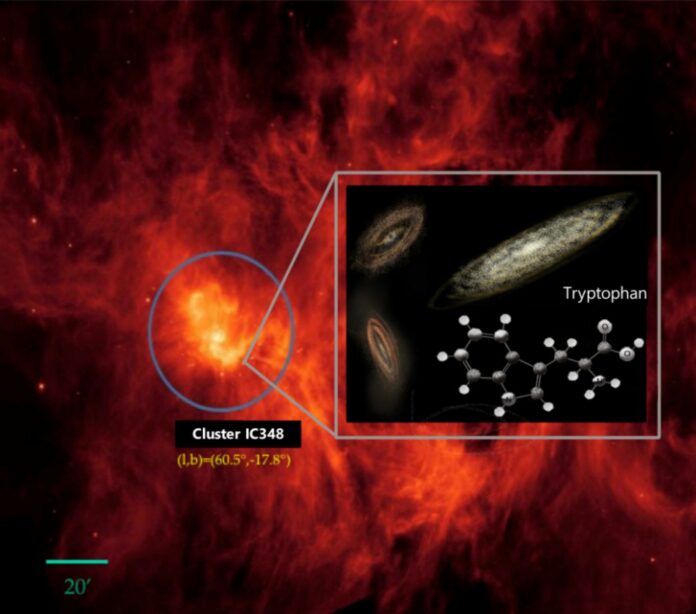One of the richest patterns of spectral lines in the infrared is produced by tryptophan, one of the 20 amino acids necessary for synthesizing essential proteins for life on Earth. The Spitzer satellite, a space-based infrared telescope, had a large spectroscopic database. Therefore, it was an ideal option to be investigated.
The amino acid tryptophan has been found to exist in the interstellar material in a nearby star-forming area, according to a study by Dr. Susana Iglesias-Groth from The Instituto de Astrofsica de Canarias (IAC) using data from the Spitzer space telescope.
They detected high amounts of tryptophan in the Perseus Molecular Complex, specifically in the IC348 star system, a star-forming region that lies 1000 light years away from Earth. The region is generally invisible to the naked eye but shines brightly in infrared wavelengths.
The study of the infrared light produced by the region identified 20 tryptophan emission lines. Tryptophan has a temperature of around 280 Kelvin, or 7 degrees Celsius. Iglesias-Groth has previously discovered hydrogen and water in IC348 at the same temperatures.
According to the study, tryptophan-related emission lines are frequently seen in regions where stars and planets originate and may also be present in other star-forming regions.
This new research may suggest that the substances necessary for synthesizing proteins, which are essential for the emergence of life, occur naturally in the regions where stars and planetary systems are formed. These substances may also impact the early chemistry of planetary systems orbiting other stars.
Dr. Iglesias-Groth says, “The evidence for tryptophan in the Perseus molecular complex should encourage the additional effort to identify other amino acids in this region and other star-forming regions. It is a fascinating possibility that the building blocks of proteins are widely present in the gas from which stars and planets form – it may be key for developing life in exoplanetary systems.”
Journal Reference:
- Susana Iglesias-Groth. A search for tryptophan in the gas of the IC 348 star cluster of the Perseus molecular cloud. Monthly Notices of the Royal Astronomical Society. DOI: 10.1093/mnras/stad1535
